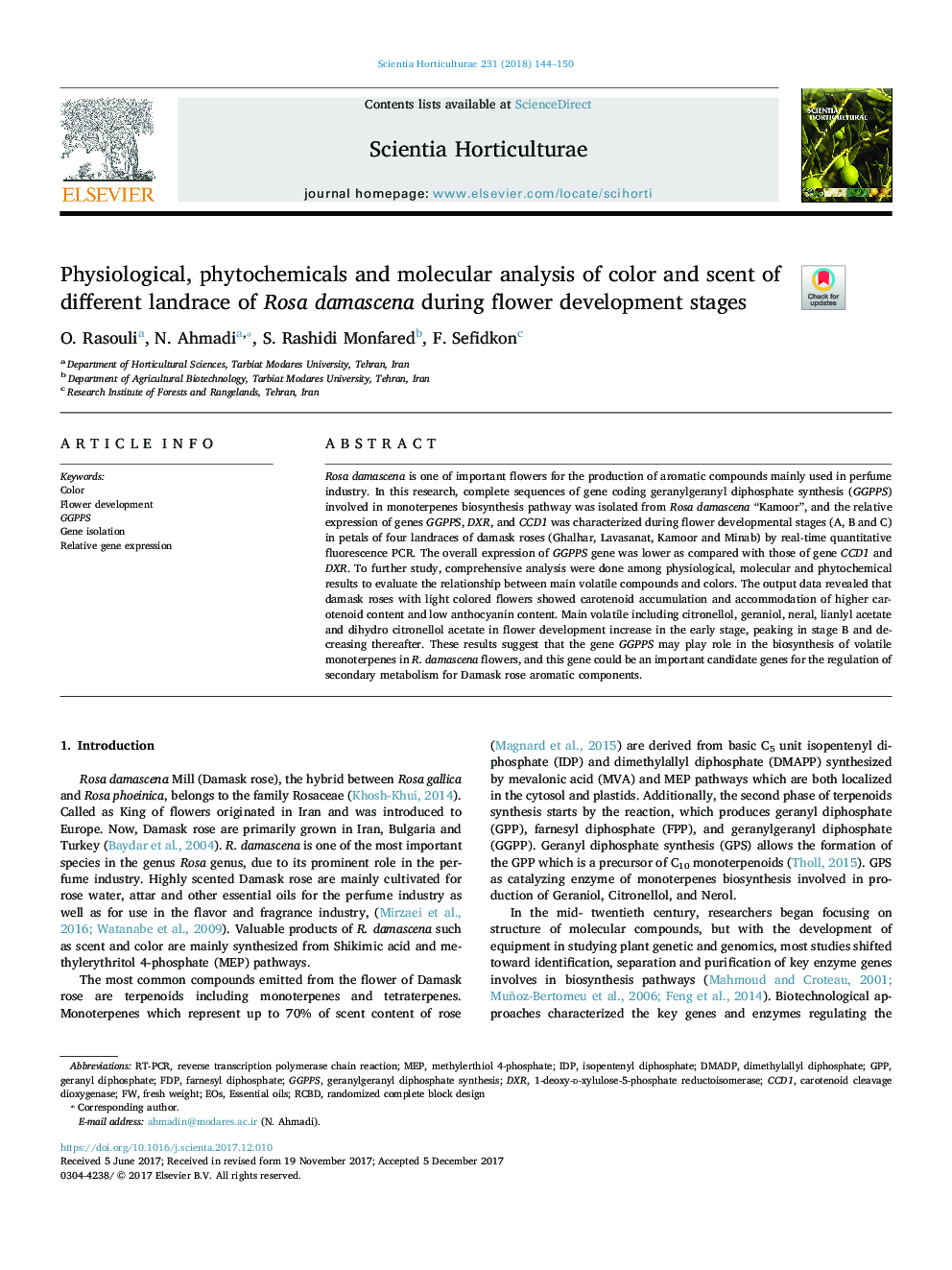| Article ID | Journal | Published Year | Pages | File Type |
|---|---|---|---|---|
| 8892981 | Scientia Horticulturae | 2018 | 7 Pages |
Abstract
Rosa damascena is one of important flowers for the production of aromatic compounds mainly used in perfume industry. In this research, complete sequences of gene coding geranylgeranyl diphosphate synthesis (GGPPS) involved in monoterpenes biosynthesis pathway was isolated from Rosa damascena “KamoorË®, and the relative expression of genes GGPPS, DXR, and CCD1 was characterized during flower developmental stages (A, B and C) in petals of four landraces of damask roses (Ghalhar, Lavasanat, Kamoor and Minab) by real-time quantitative fluorescence PCR. The overall expression of GGPPS gene was lower as compared with those of gene CCD1 and DXR. To further study, comprehensive analysis were done among physiological, molecular and phytochemical results to evaluate the relationship between main volatile compounds and colors. The output data revealed that damask roses with light colored flowers showed carotenoid accumulation and accommodation of higher carotenoid content and low anthocyanin content. Main volatile including citronellol, geraniol, neral, lianlyl acetate and dihydro citronellol acetate in flower development increase in the early stage, peaking in stage B and decreasing thereafter. These results suggest that the gene GGPPS may play role in the biosynthesis of volatile monoterpenes in R. damascena flowers, and this gene could be an important candidate genes for the regulation of secondary metabolism for Damask rose aromatic components.
Keywords
DXRDMADP1-deoxy-d-xylulose-5-phosphate reductoisomeraseFDPIDPRT-PCRMEPGGPPSGPPRCBDisopentenyl diphosphateRelative gene expressionFlower developmentGene isolationdimethylallyl diphosphatecarotenoid cleavage dioxygenaseColorEssential oilsrandomized complete block designEOsfarnesyl diphosphatereverse transcription polymerase chain reactionfresh weightGeranyl diphosphate
Related Topics
Life Sciences
Agricultural and Biological Sciences
Horticulture
Authors
O. Rasouli, N. Ahmadi, S. Rashidi Monfared, F. Sefidkon,
